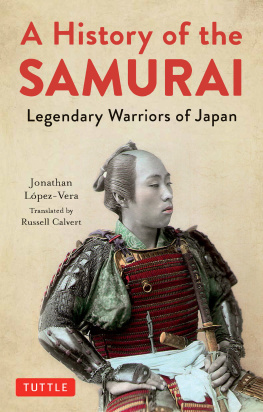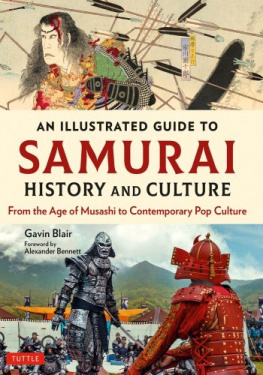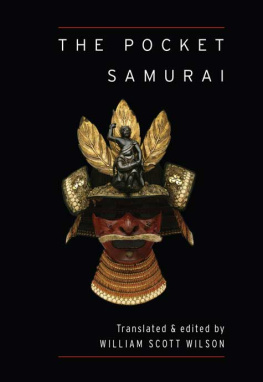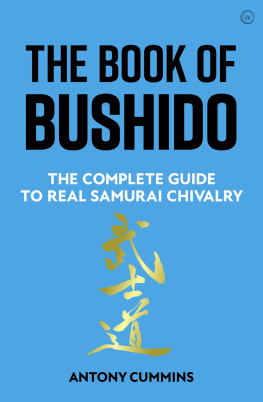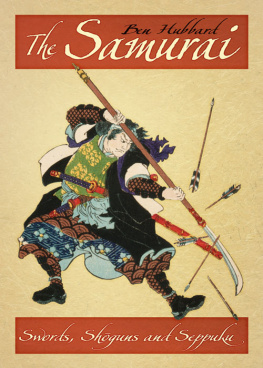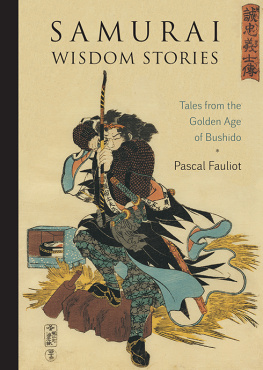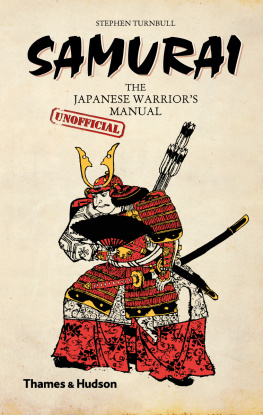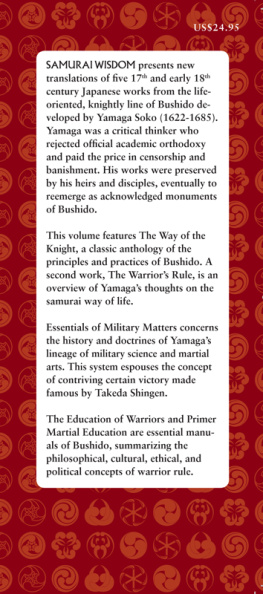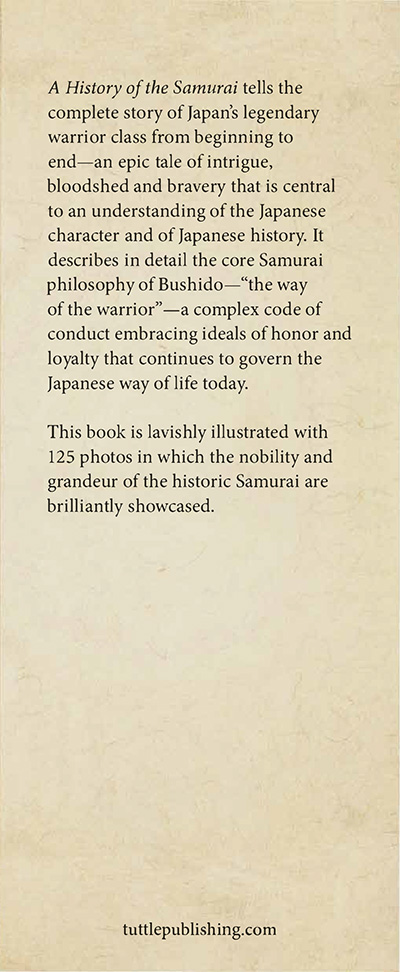
A History of the
SAMURAI
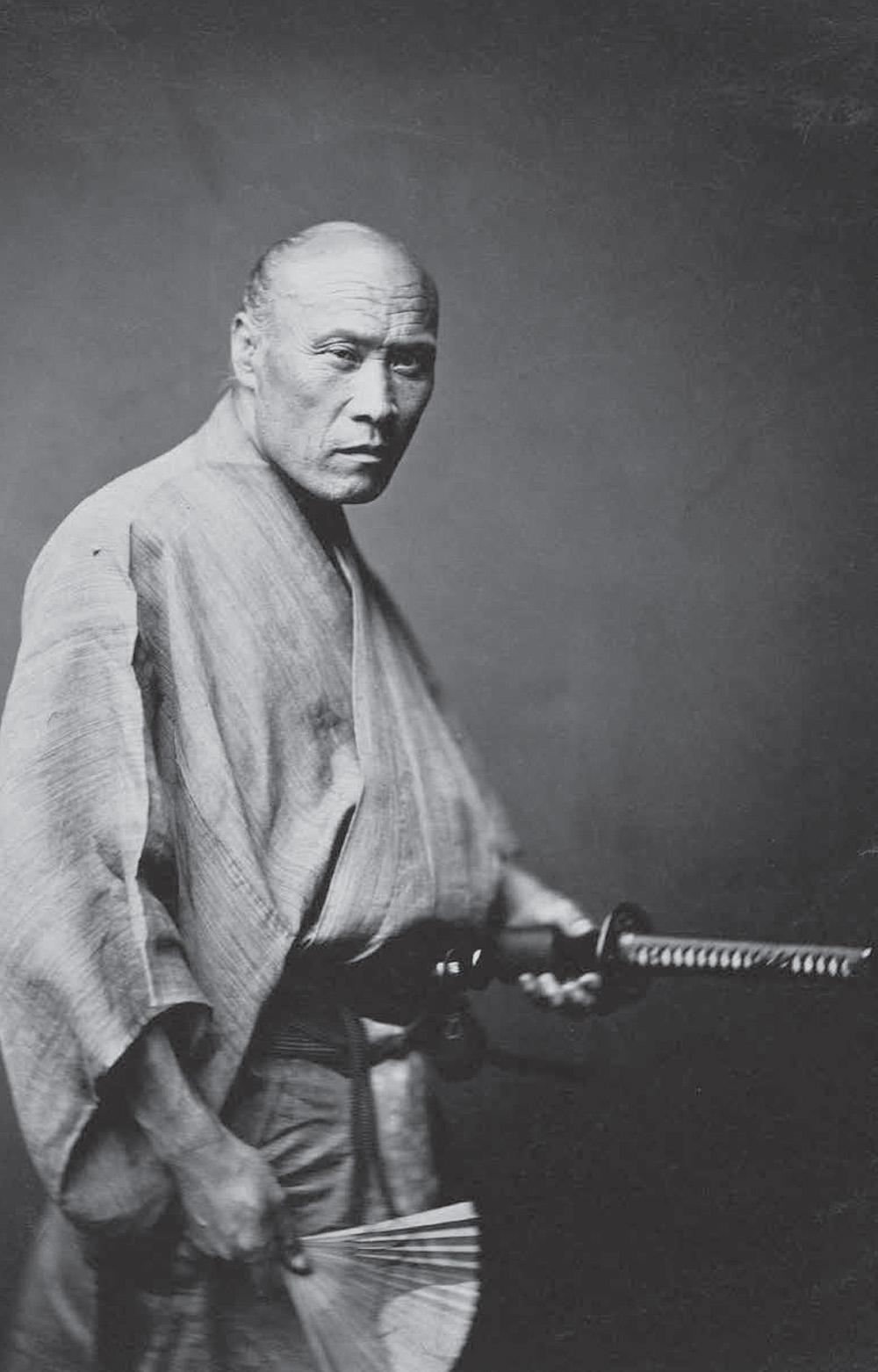
A History of the
SAMURAI
Legendary Warriors of Japan
Jonathan Lpez-Vera
Translated by
Russell Calvert

THE TUTTLE STORY
Books to Span the East and West
Our core mission at Tuttle Publishing is to create books which bring people together one page at a time. Tuttle was founded in 1832 in the small New England town of Rutland, Vermont (USA). Our fundamental values remain as strong today as they were thento publish best-in-class books informing the English-speaking world about the countries and peoples of Asia. The world has become a smaller place today and Asias economic, cultural and political influence has expanded, yet the need for meaningful dialogue and information about this diverse region has never been greater. Since 1948, Tuttle has been a leader in publishing books on the cultures, arts, cuisines, languages and literatures of Asia. Our authors and photographers have won numerous awards and Tuttle has published thousands of books on subjects ranging from martial arts to paper crafts. We welcome you to explore the wealth of information available on Asia at www.tuttlepublishing.com.
Published by Tuttle Publishing, an imprint of Periplus Editions (HK) Ltd.
www.tuttlepublishing.com
Translated from Historia De Los Samurais
By Jonathan Lopez-Vera
Published by Satori Ediciones
Copyright Satori Ediciones
English Translation Copyright 2020
Periplus Editions (HK) Ltd.
All rights reserved. No part of this publication may be reproduced or utilized in any form or by any means, electronic or mechanical, including photocopying, recording, or by any information storage and retrieval system, without prior written permission from the publisher.
Library of Congress Cataloging Number in Process
ISBN: 978-1-4629-2134-8
Distributed by:
Japan
Tuttle Publishing
Yaekari Building 3rd Floor
5-4-12 Osaki Shinagawa-ku
Tokyo 141 0032
Tel: (81) 3 5437-0171
Fax: (81) 3 5437-0755
www.tuttle.co.jp
North America, Latin America & Europe
Tuttle Publishing
364 Innovation Drive
North Clarendon, VT 05759-9436 U.S.A.
Tel: 1 (802) 773-8930
Fax: 1 (802) 773-6993
www.tuttlepublishing.com
Asia Pacific
Berkeley Books Pte. Ltd.
3 Kallang Sector #04-01, Singapore 349278
Tel: (65) 6741-2178
Fax: (65) 6741-2179
www.periplus.com
23 22 21 20 5 4 3 2 1 2002VP
Printed in Malaysia
TUTTLE PUBLISHING is a registered trademark of Tuttle Publishing, a division of Periplus Editions (HK) Ltd.
For Ginia, who has always been there, and Sren, who has taken shape at the same time as this book.
Note on the Japanese Language
For all Japanese names I have chosen to keep the Japanese rules for word order, with the surname first, followed by the first name. When a name has to be shortened, the usual approach is to only use the surname, but in the case of some particularly important people, it is common to only use the first name, as in the case of Toyotomi Hideyoshi, who we call Hideyoshi; in many cases, we shall also do this to avoid the confusion that could occur between members of the same family, for example when talking about the Minamoto. At times, the reader may struggle to follow because a father and sons names look similar since they share one of the two characters used to write them, as in the case of Taira Kiyomori and Taira Munemori.
The names of some emperors begin with the prefix Go-. This means there was a previous emperor with the same name, which is why in some texts it is translated as the second and why we can find Go-Shirakawa written as Shirakawa II. Here we have respected the Japanese form.
When talking about early periods, it is common to find the article no, which equates to of, between the surname and first name, as in Minamoto-no-Yoshitsune. Here it has been left out and Minamoto Yoshitsune used.
I have chosen not to include the many different names the same person may have had over their lifetimea common occurrence in the Japan of that period and even more so in the case of the samuraiin order to not complicate the telling of the tale.
In the case of the samurai who converted to Christianity and changed their first name to a Western one, most adopted Portuguese names. So, for example, when talking about Konishi Yukinaga, I refer to his Christian name, Agostinho.
The Japanese words used in this text have been indicated with italics, but I have chosen to only do so the first time they are mentioned, in order to make the book easier to read. Moreover, with these words, we have kept the Japanese norm of not altering them when used in the plural. Thus, we speak of the bushi and not the bushis.
The use of the macron has also been maintained. This is a diacritical mark consisting of a horizontal bar over a vowel, as seen in the word taik, which indicates that the vowel should be pronounced with twice its normal length; this has only been omitted with a few Japanese words that have been incorporated into English, as for example with Kyoto, rather than its Japanese form, Kyto.
Japanese vowels have the following approximate sounds: the letter a is pronounced as in car; e as in egg; i like the ee in deep; o as in bold; u as in truce. Consonants are pronounced roughly in the same way as in English, the main difference being that g is always pronounced as in gap, even if it comes before e- or i-. I have chosen not to include the Japanese script version of words, names or places, since as I see it, this would not contribute anything to a book of these characteristics.
Preface
This is a book about the samurai, as the title makes clear. The samurai ruled in Japan for no less than seven centuries, which means that to study the history of the samurai over that time span is pretty much to study the history of Japan. Yet, that is not the only way to look at things, because a society or areas history is not only about its ruling class, but the history of all its people. In the case of Japan, between the twelfth and nineteenth centuries, that would also include the peasantsthe great majority of the population and foundation of the countrys economic systemtraders, artisans, clergy, pariahs, etc. It is true that all of them appear in this book, but indirectly, because this is about the history of the samurai, not of Japan, which is dealt with by some excellent books you will find listed in the bibliography. Nor is this a book about the samurai in general; you will find no lists here of Japanese words for all the parts of a suit of armor, images that explain the correct steps for slitting open your stomach or recommendations for films on the subject. There are many other books like thatalthough I did not consult them and therefore they do not appear in the bibliographybut this, to return to my original point, is a book about the history of the samurai, meant for the general public and not specifically for historians or history students.
The history of the samurai is largely not as unique and exceptionalin the literal senseas it may appear to be, if we compare it to that of other warrior castes from other times and places. Wherever there have been civilizations, the existence of warriors is something almost inevitable, since different human communities have always needed to defend themselves or attack others who in turn have defended themselves. Those best suited for these tasks have normally ended up forming a defined group of specialists, as has happened with other trades. The difference being that this group, knowing their ability to use brute force conferred on them a certain power, have (almost) always ended up realizing they could use that skill to rule over the rest. In the case of Japan, within the previously mentioned seven centuries of samurai dominance, there were three successive military governments, called Kamakura, Ashikaga and Tokugawa, respectively, each with its own characteristics and idiosyncrasies. There were periods of relative or absolute peace, interrupted by conflicts which were largely local on some occasions and largely nationwide on others. One conflict was total and widespread and lasted more than a century.
Next page
